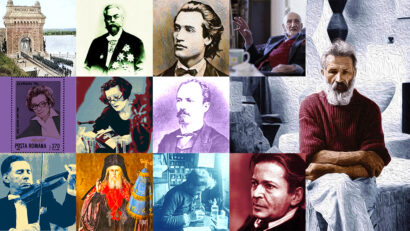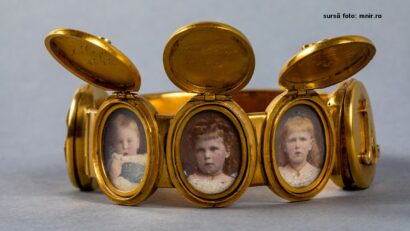The Cucuteni culture in Romania
Evidence has been unearthed in Neamt county belonging to the Cucuteni-Trypillian pre-historic civilisation.

Christine Leșcu, 01.10.2016, 11:55
The region of Neamt in Northeastern Romania is one of
Moldavia and Romania’s best-known regions, since here, the landscape invites
you to start outings in a region boasting a rich historical heritage, replete
with monuments and monasteries. Yet it is not only the political and religious
history we have in mind, but also the literary history, as Neamt is the county
where the great Romanian prose writer Ion Creanga was born. Many of the
region’s landscapes and sites are recurrent in his works.
Neamt also boasts
an asset which although is less known to the public, bears great scientific
importance. In the county seat Piatra Neamt and its surroundings important
archaeological evidence has been unearthed, belonging to the
Cucuteni-Trypillian pre-historic civilisation. Quite a few of these
archaeological items are on display at the Cucuteni Eneolithic Art Museum in
Piatra Neamt. The Cucuteni civilisation stands out mainly because of its arts
and crafts, ceramics in particular, an art that to a great extent earned the
Cucuteni civilisation the label of the most important European pre-historic
civilisation. Constantin Preoteasa is a researcher with the Cucuteni Culture
International Research Centre. He will now be giving us details about the
Cucuteni culture.
It is the last Neo-Eneolithic civilisation in this part of Europe and
also the last pre-Indo-European population in the region. Between 5000 and 3500
BC, when reportedly this exceptional culture gained momentum on the continent,
human settlements on the present-day territory of Romania, that is an area
stretching between the Transylvanian segment of Olt and Prut River, were
practically the dominant culture across Europe in terms of living standards. Of
course, this civilisation spread on a much larger area, including part of
today’s Republic of Moldova and Ukraine, stretching between the Transylvanian
segment of Olt river and the Dnepr. The main characteristic, interesting for both
specialists and the general public, turning the Cucuteni civilisation into the
most intensely researched and the most widely exhibited civilisation ever to
have been encountered on Romania’s present-day territory, is the exquisite
quality and the significant volume of its archaeological evidence. No other
civilisation from any other historical era on Romania’s present-day territory
can match the Cucutenti culture, for the reasons we have just mentioned.
In Moldavia’s Bacau
and Neamt Counties the most relevant archaeological evidence of the Cucuteni
Culture has been unearthed, with most of the items being exhibited and
scientifically registered with the Cucuteni Eneolithic Art Museum in Piatra
Neamt. Here is researcher Constantin Preoteasa once again:
At the moment, we store in Piatra Neamt about 70% of the Cucuteni
cultural heritage discovered on Romania’s present-day territory. The Cucuteni
Eneolithic Art Museum in Piatra Neamt is the only one of its kind in the world.
At present, here we have the most important collection of Cucuteni art around
the world and the most important collection of pre-historic art in Eastern
Europe. The vast majority of our heritage has been unearthed in Moldavia’s
sub-Carpathian region. The Cucuteni cultural heritage that we have consists of
several tens of thousands of art items that have already been restored,
preserved and completed, which can be capitalised on both as exhibition and
publishable items. They stand out as a distinct part of the Cucuteni decorative
art, particularly four categories of pots, iconic for this civilisation: the
crown pots, coaster pots, binocular pots as well as round-dance pots, such as
the famous Frumusica round dance pot discovered near the city of Piatra Neamt
by the founders of the city’s present archaeology and history museum, Father
Constantin Matasa, who practically laid the foundation of the museum with his
own collection of Cucuteni artefacts, more than 80 years ago.
The Cucuteni
civilisation’s figurative art is not as beautiful and spectacular, since the
anthropomorphic statues, on display also in Piatra Neamt, had a rather
religious purpose. The figures symbolising fertility can be seen on the
premises of Piatra the Neamt city centre, in a building erected between 1928
and 1930, by entrepreneur Carol Zany, taking up on a project drawn by
Bucharest’s former chief architect Roger Bolomey. Between 1930 and 1948, the
building played host to Piatra Neamt’s first private bank, while today it is
the building hosting the Cucuteni Eneolithic Art Museum in Piatra Neamt.






























